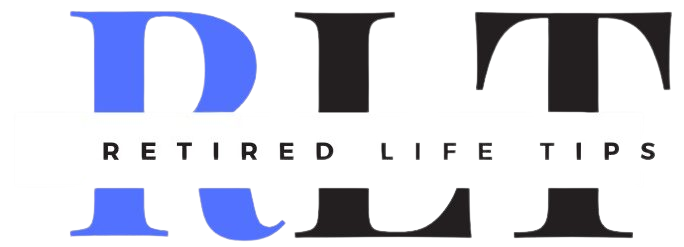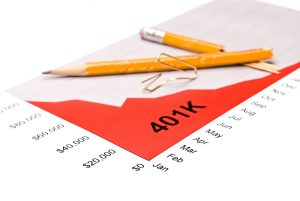So you’re wondering, what to invest with $1000? What is your best option? The stock market has been going through some rough times lately. Many investors are worried about their retirement funds and whether they’ll see returns after the recent Dow Jones Industrial Average drop.
Investors often ask me where they should put their money. My answer is simple: diversify.
Diversification means investing in multiple assets, such as stocks, bonds, real estate, commodities, and even gold. This way, no matter what happens, you won’t lose too much.
However, before you decide where to put your money, you’ll need to figure out exactly how much you should invest. Remember that the amount of money you invest depends on several things, such as your age, risk tolerance, time horizon, and investment goals.
Contents
Invest in a 401(k) plan
The best way to save for retirement is through your employer-sponsored retirement savings plan, such as a 401(k). This type of account allows you to contribute up to $18,000 per year ($24,000 if you’re 50 or older), and the money grows tax-deferred until it’s withdrawn.
You can also make additional contributions to this account outside of work. (If you don’t have access to a company plan, you may be able to open an IRA with a bank.)
401(k) plans need to be corrected for everyone. If you’re self-employed, you might need access to one. If you already have enough saved for retirement, then you don’t need another source of income invested in the stock market. But if you still need to start saving for retirement or if you want to supplement your current investments, then a 401(k) is a great place to start.
401(k) accounts offer many benefits, including:
• A guaranteed return. Your money will grow at least 3% annually, plus any earnings from dividends and capital gains.
• Tax breaks. Contributions to a 401(k) are generally deductible against ordinary income, so there’s no federal income tax deduction when you withdraw your money. However, state taxes vary by location.
• Flexibility. You can roll your 401(k) into an IRA or other accounts.
• Access. You can borrow from your 401(k) without paying penalties.
Invest in stocks, not bonds
The stock market is the best place to invest your money. It’s a great way to make money and can be very rewarding if you do it right. But there are also risks involved with investing in stocks. You could lose all of your money or even get hurt financially. That’s why it’s essential to learn how to invest wisely.
Stocks are shares of ownership in a corporation. They’re bought and sold on public exchanges like the New York Stock Exchange. When you buy a share of stock, you own part of the business. As the owner, you receive regular payouts called dividends. These dividends come from profits earned by the company.
There are two main types of stocks: growth and value. Growth stocks tend to outperform during bull markets but can fall quickly during bear markets. Value stocks tend to perform better during bear markets because they hold steady or increase prices.
When you invest in stocks, you become a shareholder. Shareholders vote on significant decisions, such as splitting a company into separate companies. They also elect board members who oversee operations.
You can choose to invest in individual stocks, mutual funds that track specific sectors of the economy, exchange-traded funds (ETFs), which combine several different stocks into one fund, or index funds, which track an overall market benchmark.
You should only put some of your money into stocks. The average investor loses money when they put their entire portfolio into stocks. Instead, spread your investment dollars among various asset classes, such as stocks, bonds, real estate, commodities, and cash.
Invest in U.S. Treasury Securities
The United States Treasury is the world’s largest holder of government debt and has a long history of issuing bonds to finance its operations. The Treasury issues securities through three primary channels: (1) direct sales, (2) auctions, and (3) open market purchases.
Direct sales are made by the Treasury directly to investors. The Treasury conducts auctions with other governments, corporations, financial institutions, and individuals. Open market purchases occur when the Treasury buys securities from financial institutions.
Treasury bills are short-term securities issued for periods ranging from 1 month to less than one year. Treasuries are considered risk-free investments. If you need money now, consider buying a treasury bill instead of a bond.
Treasury notes are medium-term securities issued for terms between 1 and 10 years. Like treasuries, these securities are considered safe investments. However, unlike treasuries, they offer higher rates of return.
Treasury bonds are long-term securities issued for terms longer than ten years. Bonds have variable interest rates tied to inflation. Because they are backed by the full faith and credit of the U.S. Government, they are considered very safe investments.
Treasury Inflation-Protected Securities (TIPS) are fixed-income securities that protect against rising prices. TIPS are backed by the full Faith and Credit of the U.S. Government. Unlike most bonds, TIPS do not fluctuate in value based on changes in interest rates.
Municipal bonds are tax-exempt securities offered by state and local governments. State and local governments use them to raise money for schools, roads, bridges, and public works. These bonds are usually sold at lower yields than corporate bonds.
Municipal bonds are generally considered safer than corporate bonds because the states and municipalities back them. It means that if there were problems within the state or city, the issuer would be responsible for paying back any losses incurred.
Companies issue corporate bonds. They are often used to raise capital for business expansion. Companies use them to borrow money for building factories, developing new products, and acquiring other businesses. Corporate bonds are also “junk bonds” because they are rated below investment grade.
Corporate bonds are risky investments. Although they carry low-interest rates, they are subject to default risk. If a company goes bankrupt, the investor loses his entire investment.
Trade cryptocurrencies.
The first thing you need to do is find a cryptocurrency exchange that accepts your currency of choice. There are many exchanges, but the most popular ones are Binance and Coinbase. Both have pros and cons, so it’s important to research both before making decisions.
Once you’ve found an exchange that works for you, you can buy your chosen coin. You will likely be asked to provide some form of identification, so make sure you bring copies of your passport, school I.D., and anything else that proves who you are.
You should expect to wait a few days for your funds to arrive once you’ve completed the purchase. It’s always best to save up a little extra cash just in case something happens during this time.
You can now start trading! Remember, it’s always better to trade with smaller amounts until you get comfortable with the market.
Use a High-Yield Savings Account
A high-yielding savings account is an excellent way to save money. The interest rate on these accounts can be as much as 1% or more, and the minimum balance required to earn this kind of return is usually meager.
The best part about these accounts is that they are FDIC insured up to $250,000 per depositor. If your bank fails, you will retain all of your money.
Invest in ETFs
The stock market has been on a tear lately. The Dow Jones Industrial Average (DJIA) is up more than 10% year-to-date, and the S&P 500 Index is nearly 12%. But there’s one thing that hasn’t changed: Investors are still pouring money into stocks. According to U.S. Securities and Exchange Commission data, investors poured over $1 trillion into equity mutual funds last quarter alone.
But while the stock market may seem attractive right now, it’s not necessarily a good idea to invest in individual stocks. Instead, consider investing in exchange-traded funds (ETFs).
An ETF is a basket of stocks tracking a particular index. For example, the iShares Core MSCI EAFE ETF (symbol EWZ), which tracks the performance of developed markets across Europe, North America, and Asia Pacific, currently holds shares in Apple Inc., Amazon.com Inc., Exxon Mobil Corp., Google parent Alphabet Inc., Microsoft Corp., Nike Inc., and Starbucks Corp.
Open a Roth IRA
The best way to save for retirement is through a traditional or SEP-IRA. However, if you are not eligible for one of those accounts, another option is opening up a Roth IRA.
A Roth IRA allows you to contribute money tax-free and then withdraw it at any time without paying taxes on the earnings. The only exception is that you must pay income taxes after withdrawing the money at age 59 ½.
To open a Roth IRA, you must complete Form 8949 and submit it to the IRS. Once you file the form, you will receive a letter confirming your application. If approved, you will also receive a confirmation number.
This number will allow you to deposit money into your online IRA account. Your contributions will be deposited directly into your Roth IRA account.
Once you have made your initial contribution, you can continue making additional contributions each year. These contributions are also tax deductible.
Pay Down Debt
The first step in paying down debt is to list all your debts. It will include credit cards, student loans, car payments, and any other type of loan you have. Ensure the total amount owed on each item and the interest rate is listed. Once you’ve made this list, it’s time to make some serious cuts.
It would help if you tried cutting back on spending by cutting unnecessary expenses. You can do this by eliminating cable T.V., eating out less often, canceling subscriptions like Netflix and Hulu, and using public transportation instead of driving whenever possible.
When you’re ready to tackle your debt, you’ll need to find ways to reduce the amount you owe. One way to accomplish this is by consolidating your debt. Consolidation involves taking multiple types of debt and combining them into one payment.
Consolidating your debt can help you eliminate high-interest rates and lower monthly payments. It can also give you peace of mind knowing that you won’t have to worry about missed payments or late fees.
However, before consolidating your debt, you should check with your creditors to see if they offer this service. Some lenders charge an upfront fee for consolidation services. Others might require you to repay more than what you originally borrowed.
Another thing to remember when considering consolidation is how much you would save. Many people save less money because their new combined bill includes everything they were already paying.
Final Thoughts On What To Invest With $1000?
You have heard the saying, “You can only invest what you make.” It is true, but it applies to your investments as well. If you are making a lot of money right now, you should be able to put that into an investment account and not worry about losing any of it.
But if you are starting out or don’t make enough money, you may want to consider investing in something else.
Remember, there are many different options available to you. No matter which option you choose, you will still be able to grow your money over time.







































